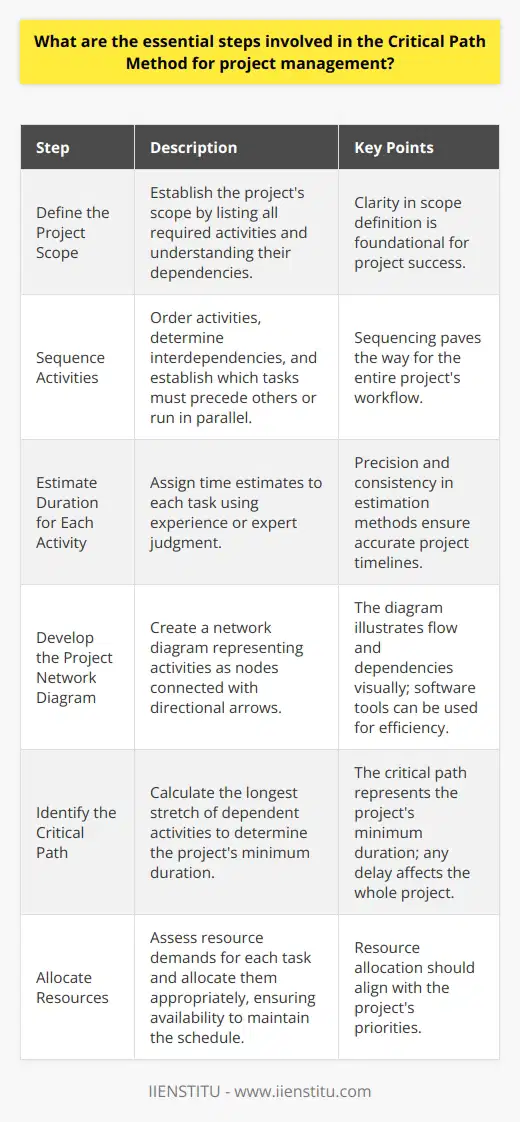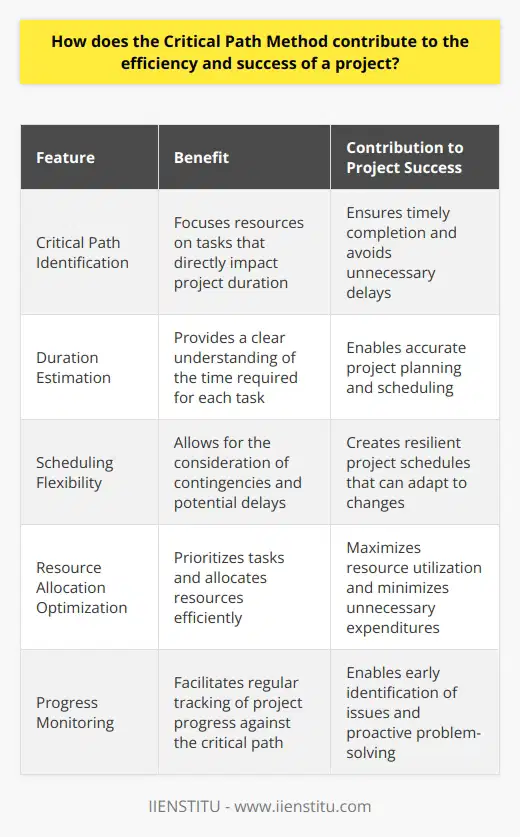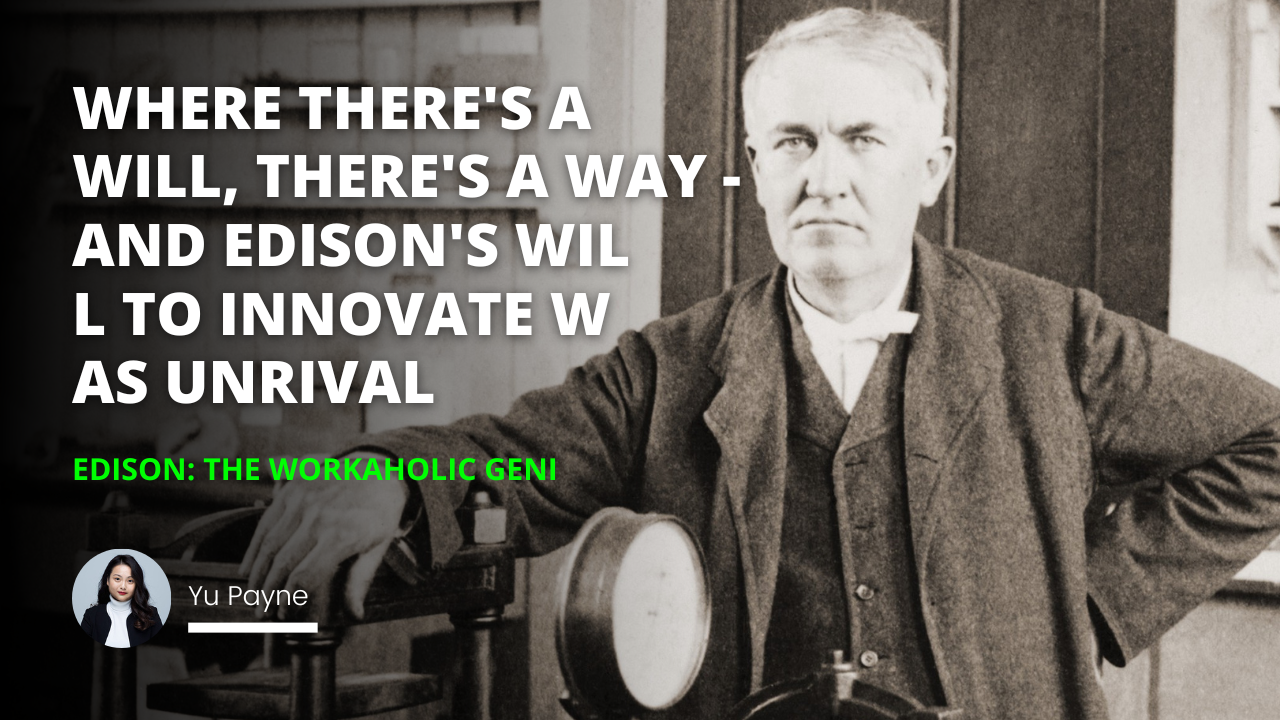
As project management practices evolve to meet the complexities of modern business projects, the need for innovative and reliable methodologies has never been greater. At the forefront of these methodologies stands the Critical Path Method (CPM), an advanced strategy designed to enhance project planning, scheduling, and execution.
This approach not only helps managers pinpoint necessary tasks and timelines but is also fundamental in optimizing resources and mitigating risks. Now, let us embark on a journey to explore the multifaceted applications of CPM to understand why it is integral to today's project management landscape, and how engaging in an online certificate courses or a problem solving skills course can amplify your expertise in this area.
Understanding the Critical Path Method
Explanation of CPM concepts
CPM, as a systematic approach to project planning, comprises a set of concepts that are key to its efficacy. It starts with the identification of all the activities and events that a project entails. These activities represent tasks that need completion, while events mark the beginning and end of these tasks. Furthermore, network diagrams are used as visual representations to map out the relationships between these tasks. Through these diagrams, we understand how individual tasks link together and affect the overall project timeline.
The concept of the critical path lies at the heart of the CPM. The critical path is the sequence of activities that determine the minimum completion time for a project. It includes tasks that have zero slack time, meaning any delay in these activities will directly impact the project end date. This focus on the critical path ensures that project managers pay close attention to the most time-sensitive aspects of their projects.
Determining the Critical Path
In determining the critical path, project managers use techniques such as the forward pass, which involves calculating the earliest possible start and finish times for each task. Conversely, the backward pass calculates the latest possible start and finish times without delaying the project.
The disparity between these two calculations yields the slack time, or float, which provides insight into schedule flexibility. Slack time is crucial for project managers to identify activities that can afford delays without affecting the project timeline unfavorably.
Elements of CPM
Kano Model: A Comprehensive Approach for Enhancing Customer Satisfaction
Failure Modes, Effects, and Criticality Analysis (FMECA): An Insightful Review
The elements of CPM include dependencies, duration, and critical activities. Dependencies outline how tasks are related, specifying the sequence in which they must occur. Duration, expressed in work periods, measures how long each task will take to complete.
Identifying critical activities, those directly influencing the project end date, is essential in focusing managerial efforts most efficiently. Understanding these elements enables project managers to mitigate hurdles through proactive planning and informed decision-making.
Benefits of Using the Critical Path Method
Enhancing project efficiency
One of the primary benefits of CPM is its ability to enhance overall project efficiency. By mapping out the essential tasks and their interdependencies, managers can allocate adequate resources, anticipate potential bottlenecks, and orchestrate tasks to complement one another seamlessly.
This organization leads to streamlined operations, which is pivotal in fulfilling project deliverables within designated timelines.
Maximizing resource allocation
Through CPM, resources are maximized by ensuring that workforce and materials are judiciously assigned to critical tasks that influence the project timeline. This method circumvents resource wastage and ensures that time-sensitive tasks receive priority.
Consequently, this judicious allocation of resources not only aids in timely project completion but also curtails unnecessary expenditure.
Minimizing project duration
The strategic planning inherent in the CPM allows for the minimization of overall project duration. By identifying the longest pathway of crucial tasks and optimizing them, project managers can significantly reduce the time taken from project initiation to conclusion, thus providing value to stakeholders by delivering results promptly.
Practical Applications of CPM
Role in the construction industry
In the construction industry, CPM becomes indispensable due to the sector's time-bound and resource-intensive nature. A typical construction project example would encompass numerous phases such as design, procurement, and building.
By implementing CPM, construction managers can sequence these phases efficiently, ensuring that delays in one phase do not adversely snowball into subsequent phases, thereby maintaining a tight schedule.
Utilities in software development
Similarly, in software development, CPM finds utility in orchestrating complex coding, testing, and deployment tasks. A software development project example might involve various teams working on different aspects of the software simultaneously. CPM enables project managers to align these concurrent tasks along an optimized track, ensuring on-time product releases and updates.
Usage in manufacturing industry
In the manufacturing industry, where production cycles and supply chain coordination are paramount, CPM offers a systematic approach for managing production runs. A manufacturing project example could involve intricate and interdependent processes such as assembly, quality control, and logistics.
CPM enables manufacturers to synchronize these processes, ultimately resulting in on-time product delivery and improved customer satisfaction.
Common Challenges and Solutions in Implementing CPM
Managing complexities and contingencies
Despite the apparent benefits, implementing CPM can present complexities, particularly when projects involve many moving parts. Catering to contingencies becomes a call for rigorous adaptability in updating the critical path as circumstances change. This dynamic adjustment ensures that projects remain on track despite unforeseen setbacks.
Handling uncertainty in activity durations
Uncertainty in activity durations also poses a significant challenge. Project managers must often make predictions based on best estimates, which can impact the reliability of the critical path. To counteract this, implementing buffers and adapting to variations in task durations ensures that projects can absorb discrepancies without jeopardizing overall timelines.
Overcoming resource restrictions
Lastly, resource restrictions can hinder CPM execution. Scarcities in labor, materials, or equipment can lead to project stagnation if not addressed adeptly. Employing project management software can mitigate such limitations by providing real-time updates on resource availability, facilitating smoother project progression.
Solutions and tools for successful CPM implementation
For successful CPM implementation, the use of sophisticated project management software has become a staple in the industry, offering capabilities to plan, schedule, and monitor every aspect of the project's critical path. Additionally, regular project reviews and updating are essential practices to ensure the chosen methodology reflects the current state of project affairs and allows for timely corrective actions when necessary.
The exploration of the Critical Path Method reveals its indispensable role within contemporary project management strategies. From its roots in project control to its widespread application across industries, CPM stands as a testament to innovation in effective project execution. The intricacies of determining the critical path, combined with the benefits it yields, underscore the necessity for acquiring and refining these skills.
Whether through online certificate courses or comprehensive problem solving skills courses, the continued study and application of CPM remain a critical endeavor for project managers eager to excel within ever-evolving business environments. Overall, the CPM has proven that adept planning, coupled with tactical project oversight, can significantly magnify the likelihood of project success.
Frequently Asked Questions
What are the essential steps involved in the Critical Path Method for project management?
Understanding the Critical Path Method
The Critical Path Method (CPM) stands as a staple in project management. It involves complex processes. Yet, it offers clarity in managing the sequence of tasks. This method ensures a project finishes within the shortest possible time.
Step 1: Define the Project Scope
Firstly, establish your project's scope. List all activities required. Understand their dependencies. Remember, clarity here is foundational for project success.
Step 2: Sequence Activities
Next, order your activities. Determine interdependencies. Ask which tasks must precede others. Establish what can run in parallel. This sequencing paves the way for the entire project's workflow.
Step 3: Estimate Duration for Each Activity
Each task needs a time estimate. Use experience or expert judgment. Precision at this stage ensures accurate project timelines. Consistency in estimation methods is key.
Step 4: Develop the Project Network Diagram
Now, create your network diagram. Represent activities as nodes. Connect them with directional arrows. This illustrates flow and dependencies visually. Use software tools for ease and efficiency.
Step 5: Identify the Critical Path
Calculate the longest stretch of dependent activities. This is your critical path. It represents the project’s minimum duration. Any delay here affects the whole project.
Step 6: Allocate Resources
Assess what resources each task demands. Allocate them appropriately. Ensure availability to maintain the schedule. Resource allocation should align with the project's priorities.
Step 7: Update the CPM Diagram as Necessary
Projects change. So must your CPM diagram. Regular updates reflect true project status. It serves as a real-time guide for the project manager.
Step 8: Monitor the Project’s Progress
Continuously monitor your project's progress. Compare actual to planned progress. Address variances promptly. Keep the project on its critical path.
Step 9: Execute and Control
Execution and control happen in tandem. Apply the CPM to guide task completion. Control by adjusting to stay on path. This ensures efficiency and adherence to the critical path.
Step 10: Review and Learn
Finally, review the project upon completion. Learn from what unfolded versus expectations. This provides insights for future projects. It helps refine the process for even better management.
Using CPM effectively requires discipline and agility. With these steps, managers can wield this powerful tool. They can steer complex projects to timely and successful completions. It's about planning meticulously and adapting to ensure the critical path remains clear.

How does the Critical Path Method contribute to the efficiency and success of a project?
Understanding the Critical Path Method
The Critical Path Method, or CPM, stands as a cornerstone in project management. It maps intricate project schedules. This technique highlights key activities. These activities determine project duration. They influence timelines directly. Let's explore how CPM aids in project efficiency and success.
Key Features of CPM
CPM boasts numerous features. It focuses on sequencing and timing. Project managers use it to establish essential tasks. These tasks impact overall completion.
- Critical path identification
- Duration estimation
- Scheduling flexibility
- Resource allocation optimization
- Progress monitoring
Enhancing Project Efficiency with CPM
CPM outlines the longest sequence of tasks. This sequence governs project completion spans. Each task on this path requires close attention.
Clarity and Direction: By identifying the critical path, project managers gain clarity. They understand where to focus resources. This ensures teams do not waste time on non-critical tasks.
Resilience and Adaptability: CPM allows for the consideration of contingencies. Project managers can predict possible delays. They can create more resilient project schedules.
Prioritization and Resource Optimization: With CPM, managers prioritize tasks efficiently. Resources get allocated to tasks that are most critical. This optimizes usage and avoids unnecessary expenditures.
Contributing to Project Success with CPM
CPM not only makes projects efficient. It also fosters success.
Risk Mitigation: By charting all tasks, CPM helps identify risks early. Managers can plan mitigations effectively. This reduces unexpected setbacks.
Enhanced Communication: Teams understand their roles through the critical path. This enhances collaboration and communication.
Realistic Timeframes: CPM helps set achievable deadlines. It accounts for task dependencies and durations.
CPM remains an invaluable tool. It ensures project efficiency and success. It streamlines management efforts. Projects become more predictable, manageable, and successful.

Why does CPM place significant importance on task sequences and what are the potential impacts if these sequences are not followed?
Understanding Task Sequences in CPM
Critical Path Method (CPM) relies on meticulous planning. It identifies the longest stretch of dependent tasks in a project. Managers use it to estimate project duration. Recognizing task sequences is fundamental to its success.
Significance of Task Sequencing
Task sequences dictate project flow. Each one must occur in a specific order. They form a chain where each link depends on the previous one. Interrelated tasks require precise coordination. Altering sequences can cause delays or budget overruns.
Sequences guide resource allocation. Knowing what comes next lets managers plan effectively. They can distribute resources without waste. Avoiding overlaps or idle periods becomes possible.
Task sequences ensure quality control. They maintain an orderly progression of work. This approach helps to uphold standards during each phase. Sequences also provide checkpoints for monitoring progress.
Risks of Ignoring Sequences
Failing to follow sequences invites several risks:
- Delays Multiply. One task delay can affect subsequent ones. The domino effect impacts the whole schedule.
- Costs Spike. Improper sequencing can lead to resource misuse. Overtime work or expedited orders may increase costs.
- Quality Suffers. Out-of-order tasks can result in rework. It becomes harder to maintain consistency and standards.
- Morale Drops. Teams lose motivation when facing constant scheduling chaos. Stress and confusion can damage team spirit.
In conclusion, task sequences in CPM allow for structured and efficient project management. Overlooking them can lead to a series of negative outcomes. They disrupt schedules, push costs up, compromise quality, and dampen team morale. Proper understanding and adherence to these sequences can make the difference between project success and failure.



